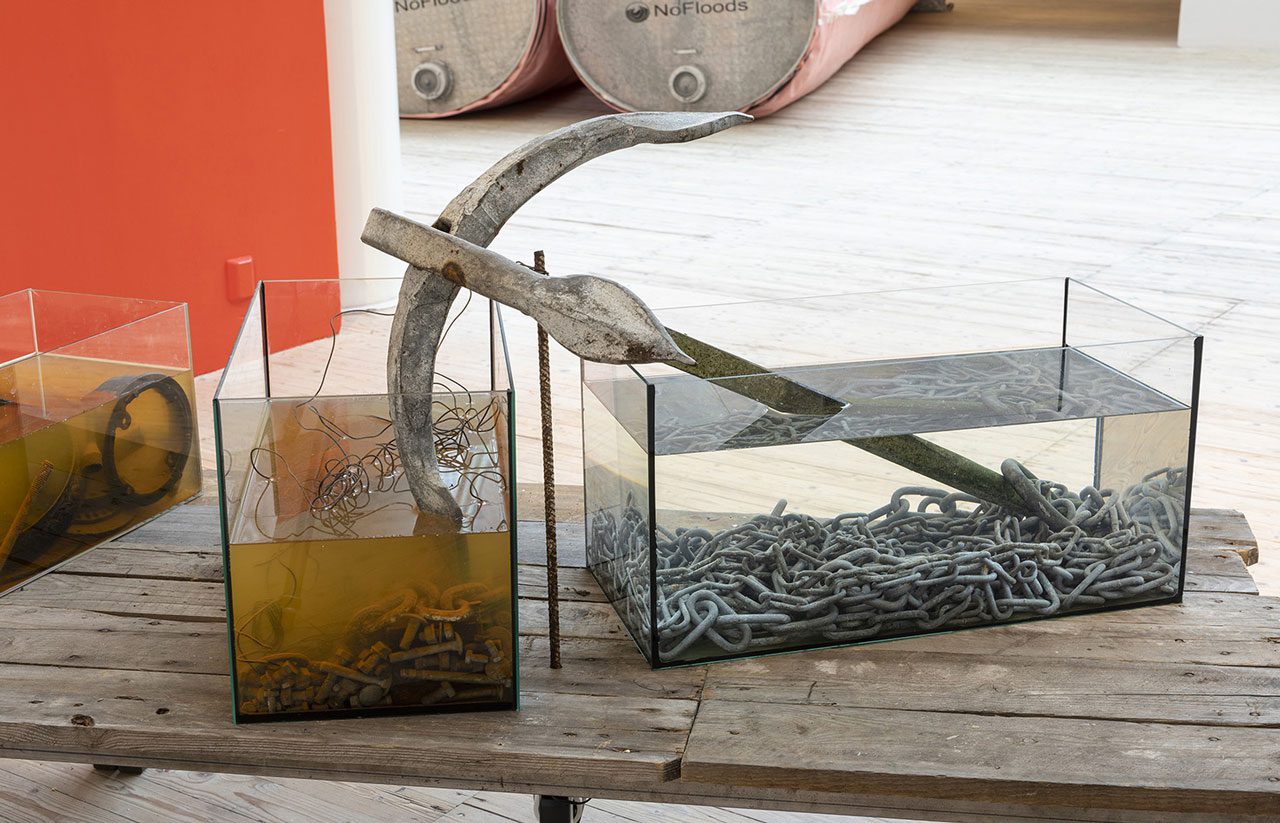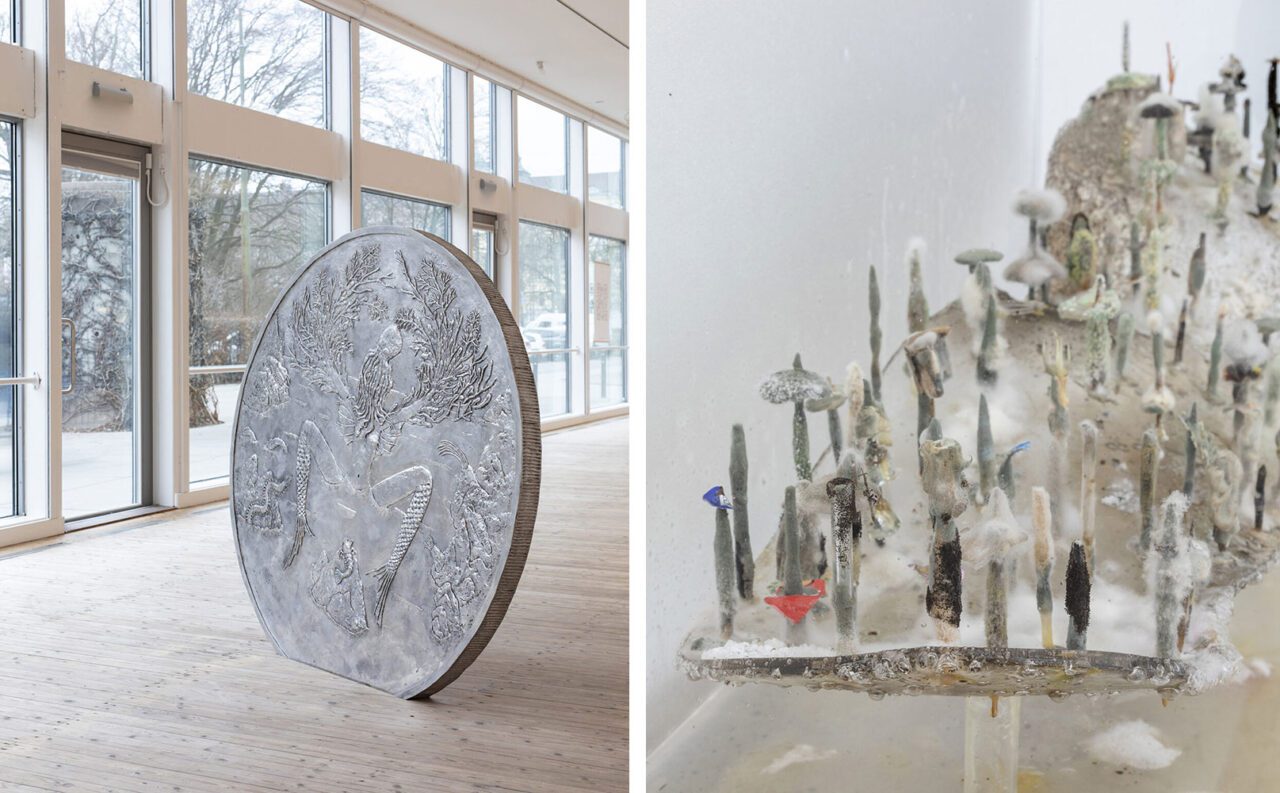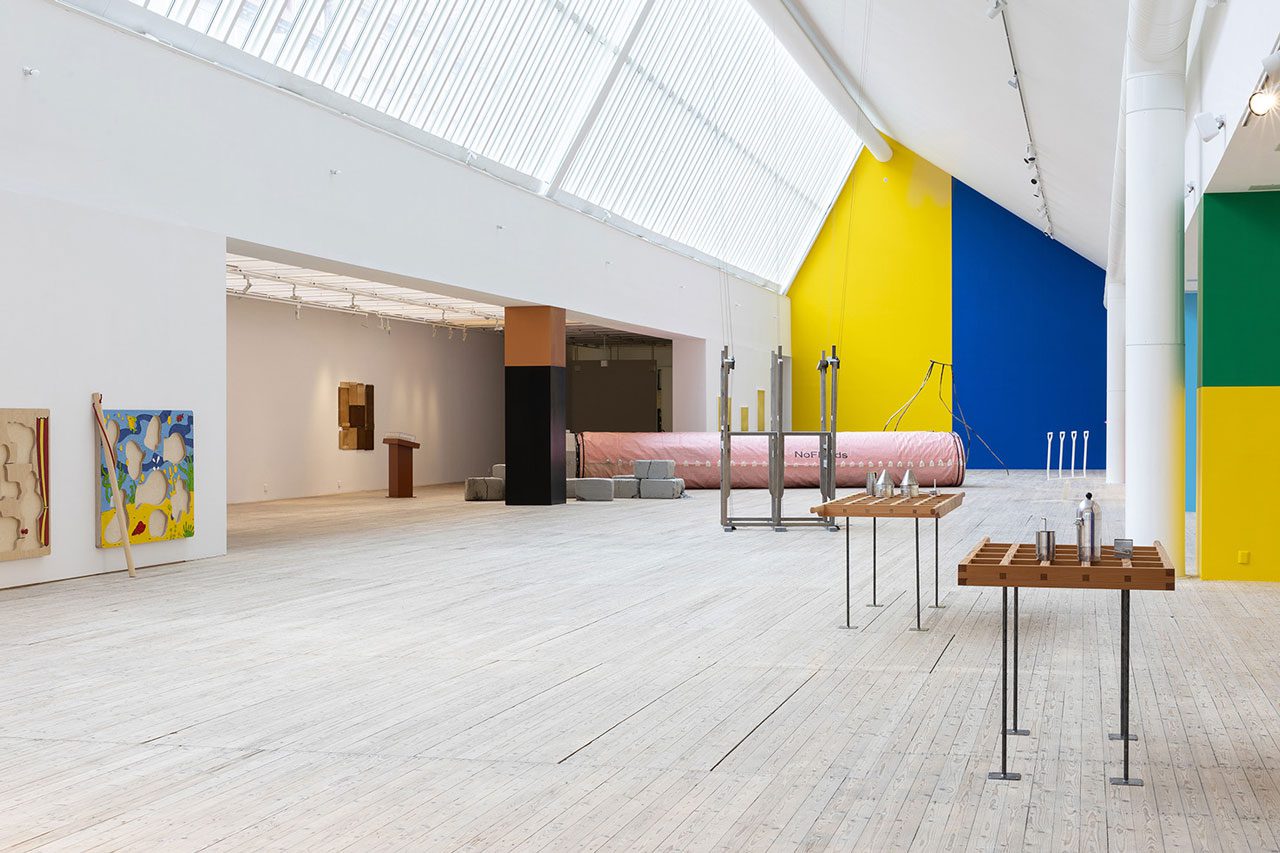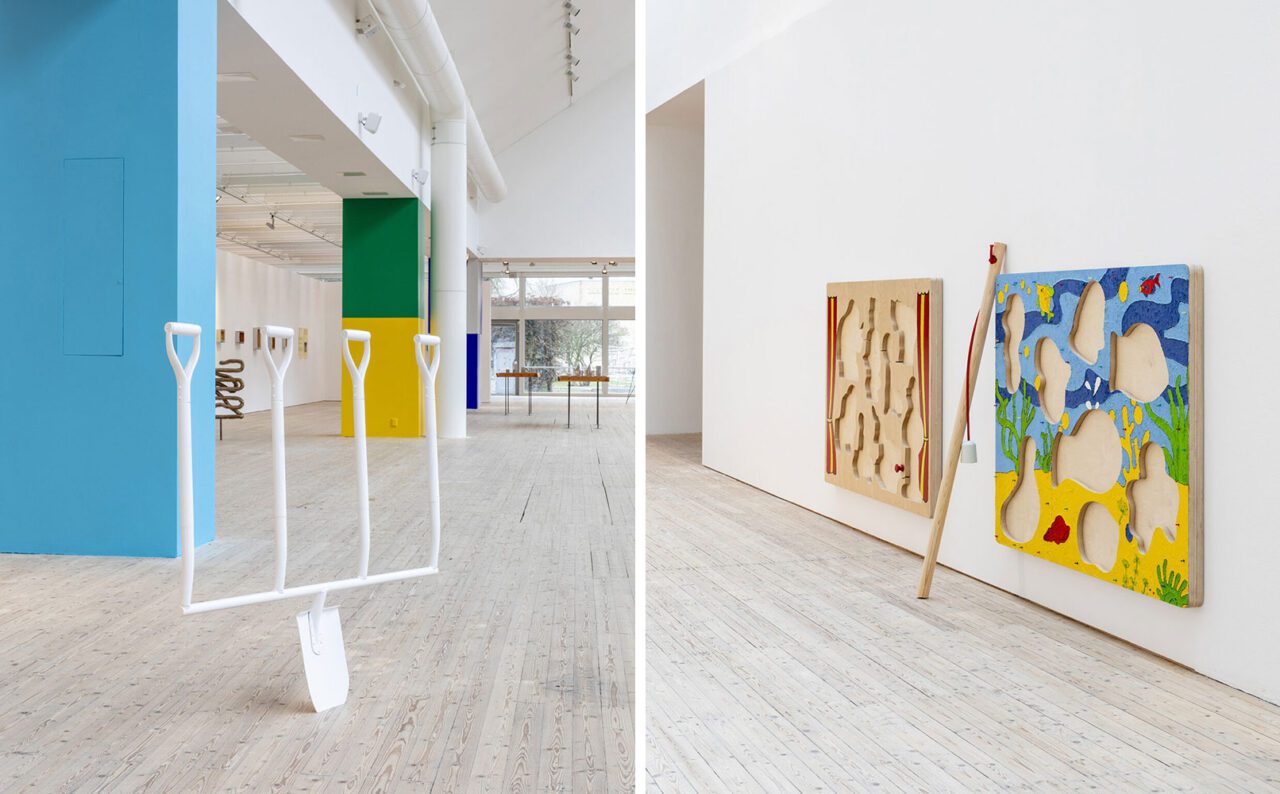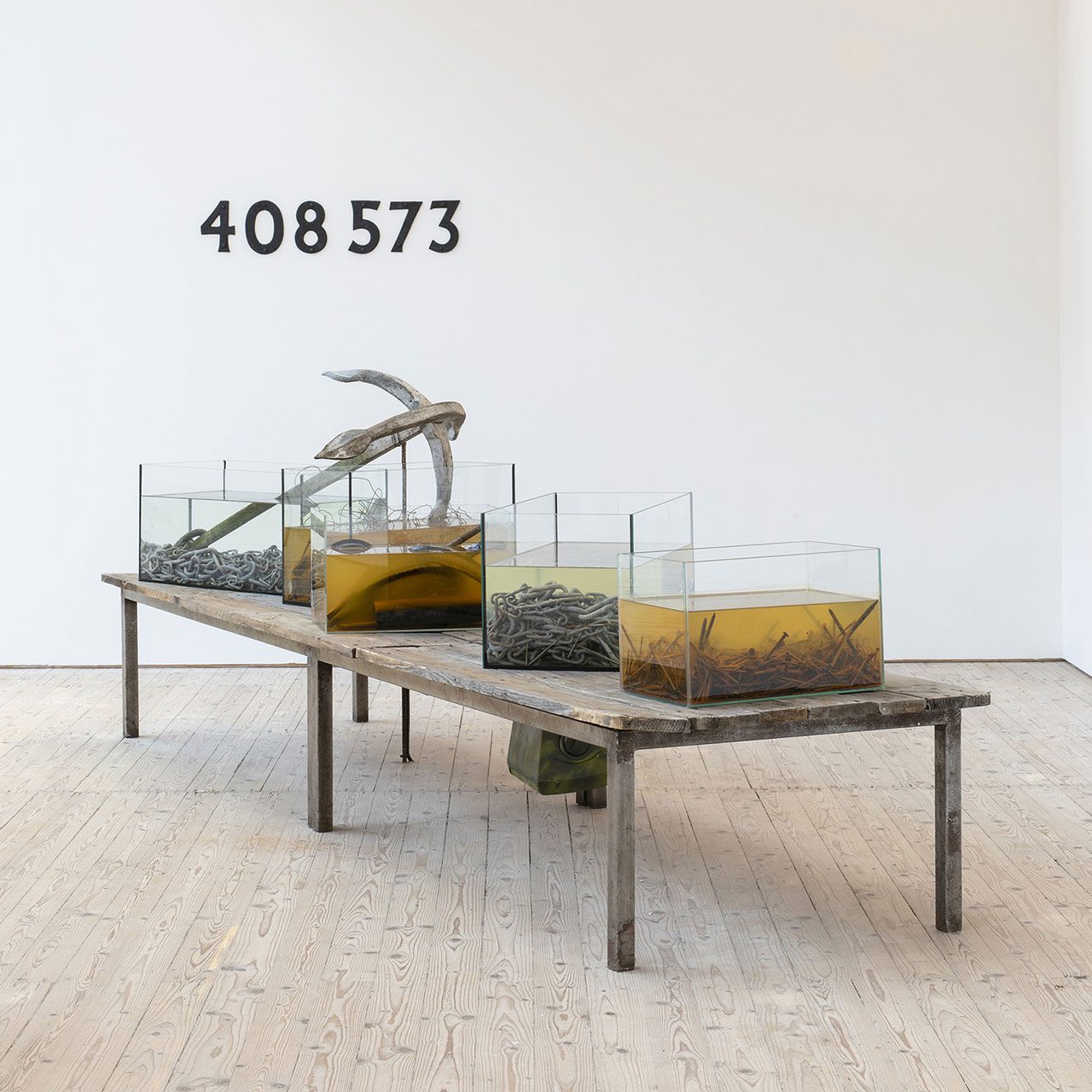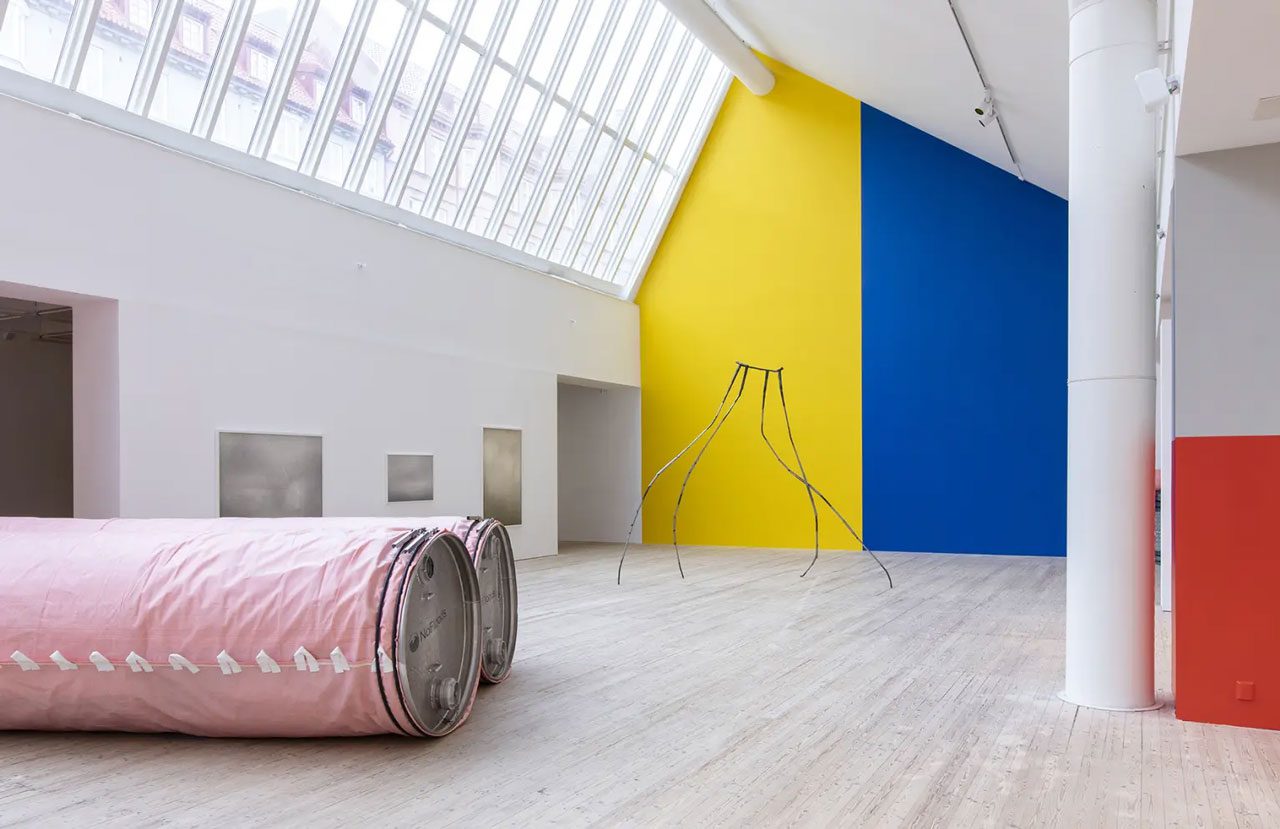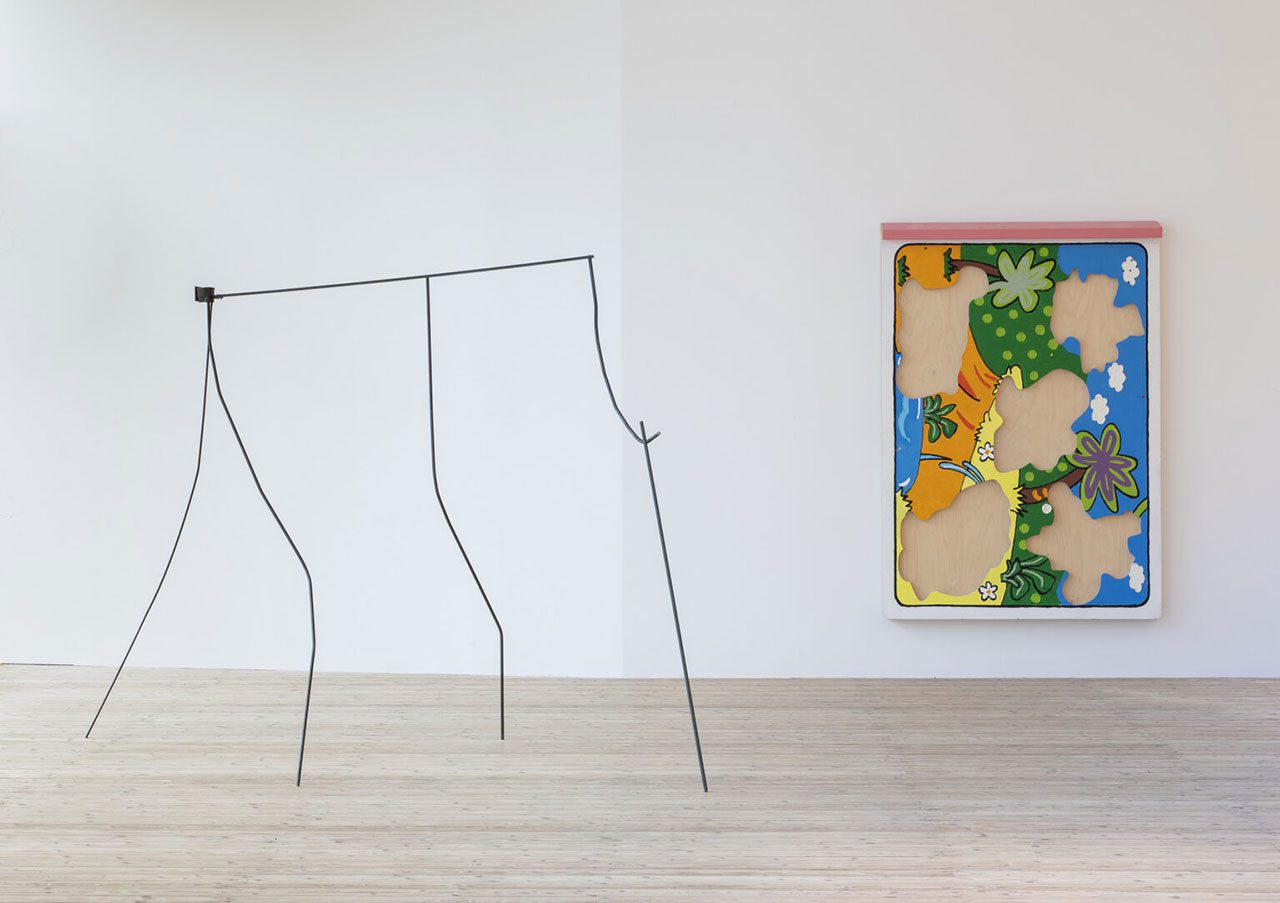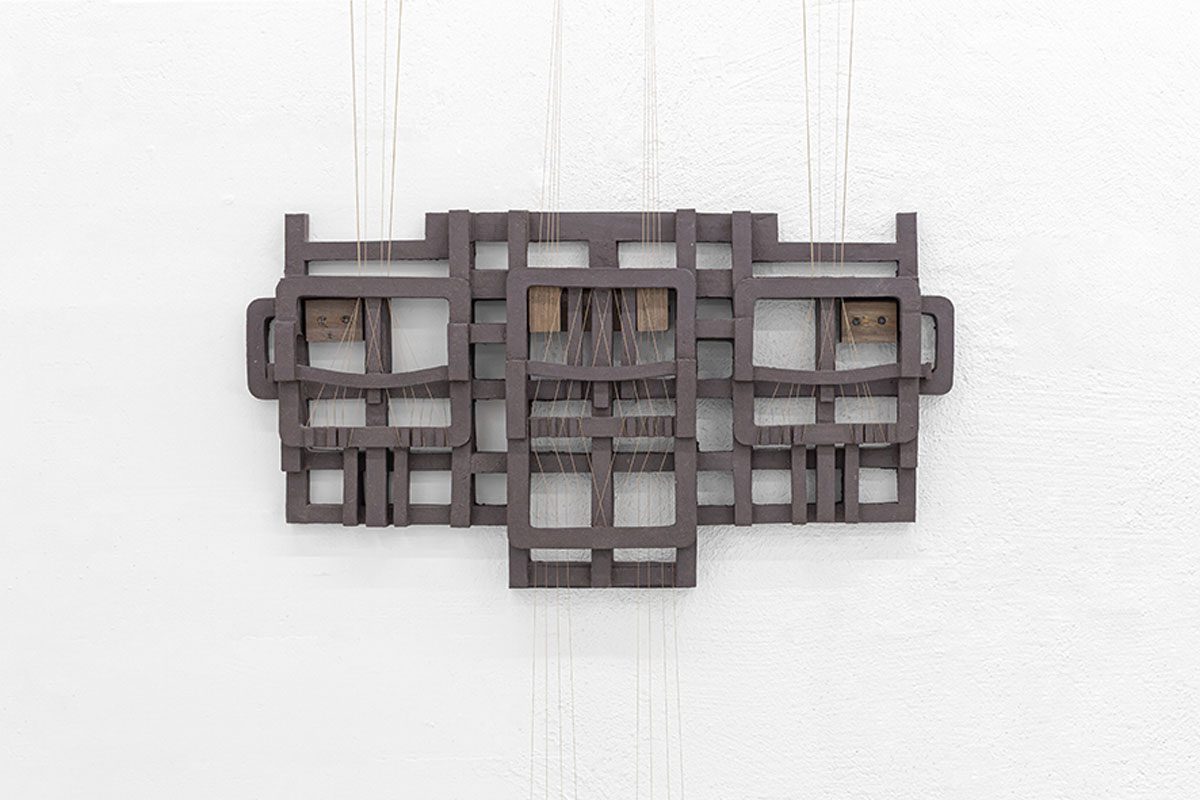PRESENTATION: Drain the Öresun
The exhibition “Drain the Öresund*” brings together fourteen artists living on both sides of the Öresund to examine the region as a site of sociocultural, ecological, technological, economic, and political entanglements. Using local and regional narratives as a starting point, the exhibition explores broader global movements and processes – migration, climate change, economic development – to uncover the connections between fact and fiction, progress and decline, the self and the world.
By Dimitris Lempesis
Photo: Malmö Konsthall
The exhibition “Drain the Öresund” presents a critical perspective on the infrastructure of the welfare state, and the greenwashing employed by commercial actors to implement profit-driven projects. Many of the artworks highlight circuits of exchange and explore the hopes and failures of mass social transformation, digging into the increasingly muddy relationships between public and private, past and present, production and destruction. What unites the artists is their exploration of how our societal structures impact human labor, human bodies, and our lived experiences. Several of the artists work from a social-historical perspective, investigating various movements and narratives in the region, often against the backdrop of climate change and privatisation. Many of the works are rooted in true stories about the region’s transformation and history – stories that the region has embraced, exploited, or rejected. Through artistic interpretation, these stories are opened up for new interpretations of labor, ecology, migration, and class. In 1953, the Scanian industrialist Ruben Rausing made an ambitious proposal: drain the Öresund, thereby bringing Malmö and Copenhagen together and providing new space for development. Rather than viewing Rausing’s statement solely as an expression of capitalist logic driven by a desire for growth, the exhibition’s curator, Post Brothers, embraces the absurdity of the statement, treating it as an artistic provocation to reconsider ideas about national borders and development. For the exhibition, the curator was deeply inspired by Jesper Meijling’s 2000 text “All That Is Fluid Becomes Solid: Lecture on Landscape and Economy”, where the researcher and architect connects Rausing’s dream of redirecting the Öresund’s waters to the logistical thinking that characterizes his company, Tetra Pak, whose operations revolve around packaging liquid food products. Malmö has a strong and vibrant contemporary art scene. “Drain the Öresund” looks across the strait, exploring the region’s origins and direction, as well as the connection between Malmö and Copenhagen. What possibilities can be found in the in-between space of this borderland? And what materials, traumas and realities lie on the seabed? The exhibition adopts an absurd yet critically pessimistic approach to inspire new reflections, drawing on Rausing’s paradoxical idea as both an exaggeration of development rhetoric and a bold reimagining of the region. The thought of draining the Öresund is to drain it of its baggage and unearth its dark depths, uncovering what has been lost, and inspire new dreams for the region’s future.
* Öresund commonly known in English as the Sound, is a strait which forms the Danish–Swedish border, separating Denmark) from Sweden). The strait has a length of 118 kilometers, its width varies from 4 kilometers (2.5 to 28 kilometers. The narrowest point is between Helsingør in Denmark and Helsingborg in Sweden.
Participating Artists: Hannibal Andersen, Kalle Brolin, Kåre Frang, Sebastian Hedevang & Andreas Rønholt Schmidt, Henriette Heise, Silas Inoue, Hanni Kamaly, Dag Kewenter, Aleksandra Kucharska, Ina Nian, Jessica Olausson, Vibe Overgaard, Matilda Tjäder
Photo: Drain the Öresun, Exhibition view Malmö Konsthall – Malmö, 2025, Courtesy Malmö Konsthall
Info: Curator: Post Brothers, Malmö Konsthall, S:t Johannesgatan 7, Malmö, Sweeden, Duration: 8/2-4/5/2025, Days & Hours: Tue & Thu-Sun 11:00-17:00, Wed 11:00-19:00, https://malmokonsthall.se/
